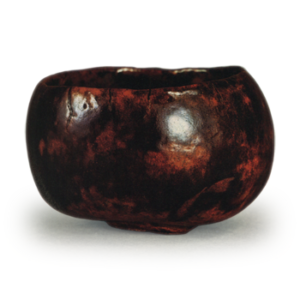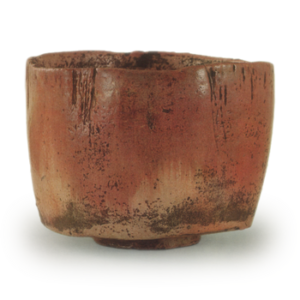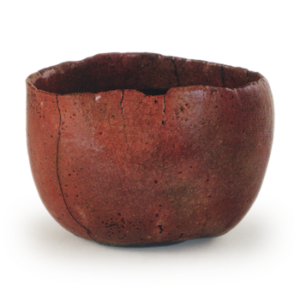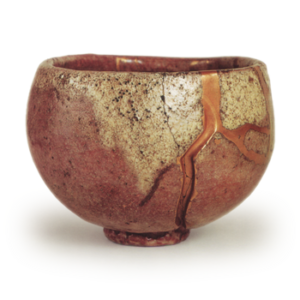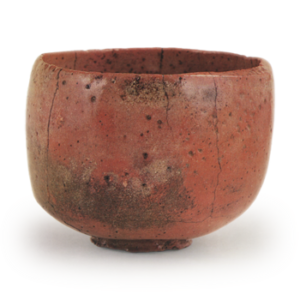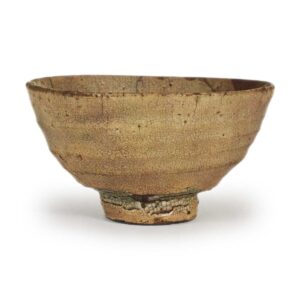
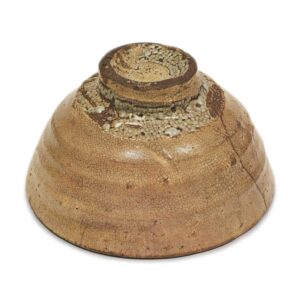
Collection: Goto Museum of Art
Height: 8.8 – 8.9 cm
Diameter: 15.0 – 15.3 cm
Outer diameter of foot ring: 5.0 cm
Height of foot ring: 1.6 cm
On the inside of the lid of the inner box, the words “Mino, tea bowl, Ido” are written in the style of Enshu, but according to the “Famous Tea Bowl Illustrated Guide” by Fushimiya Sori, the inner box is written in the hand of Enshu, and the middle box is written by Sakai Munemasa, the lord of the Himeji domain and a distinguished man of refinement in the school of Matsudaira Fumai. If this is the case, it can be said that the tea bowl was already known in the Enshu period, but it does not appear in any records from the early Edo period. However, judging from the name, it is likely that it was once owned by a daimyo who held the title of Mino no Kami.
On the inside of the lid of the box, there is a gourd-shaped seal with the name “Soga”, and it is thought that Soga Munemasa owned it at the end of the Edo period, but this is also unclear, and it is not mentioned in the “Kokin Meibutsu Ruiju” written by Matsudaira Fumai. Since it is such a famous bowl, if the owner had been identified, Fumai would probably have included it in his book.
The glaze on the Mino Ido is quite thick. Moreover, the glaze on the outside is slightly dull, giving it a slightly soft feel. However, the glaze on the inside of this tea bowl, especially that on the inside of the bowl, is truly magnificent. it can be said to be one of the best of the Oido ware. The glossy glaze, which shows small spiral-shaped marks in the center of the bowl and has moderate-sized cracks from the center to the inside, may even be better than Kizaemon’s. The craquelure becomes finer towards the top, where the glaze becomes thinner, and reaches the rim of the bowl, but it seems to be a little darker than the loquat-colored glaze, and the four clearly visible marks are particularly vivid, and work well as a single scene. The overall shape is not at all ostentatious, but is gentle and calm, like the Yuraku ware. The shape is also elegant, with the opening being narrower than the overall height. Furthermore, the foot ring is also slightly higher than the overall proportions, similar to the Tsutsui-tsutsumi and Tsushima ware. However, it tapers off slightly from the foot to the base of the bowl, and although the kaoragi glaze is applied thickly, it does not appear rough, so the exterior is rather quiet and refined, which is also a characteristic of this tea bowl.
Whether or not Sakai Sōga owned it, it was in the possession of the Akaboshi family in Tokyo from around 1892 or 1893. In June 1917, it was purchased by Dan Takuma for 200,000 yen at the first auction held by the Akahoshi family, and on November 18th 1922, it was used at a tea ceremony held by Masuda Takashi and others, with a calligraphy scroll by Saisho Seki hung on the floor and a tea caddy made by Shinbei used in combination with it. In around 1952 or 1953, it became the property of Keita Goto, and after that, it was kept in the Goto Museum of Art when it was established.




